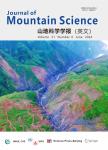Fuzzy-support vector machine geotechnical risk analysis method based on Bayesian network
Fuzzy-support vector machine geotechnical risk analysis method based on Bayesian network作者机构:School of Civil EngineeringSouthwest Jiaotong UniversityChengdu 610031China Sichuan Provincial Transport Department Highway PlanningSurveyDesign and Research instituteChengdu 610041China
出 版 物:《Journal of Mountain Science》 (山地科学学报(英文))
年 卷 期:2019年第16卷第8期
页 面:1975-1985页
核心收录:
学科分类:08[工学] 080104[工学-工程力学] 0815[工学-水利工程] 0801[工学-力学(可授工学、理学学位)]
基 金:supported by the National Key Research and Development Program (Grant No. 2017YFC0504901) Sichuan Traffic Construction Science and Technology Project(Grant No. 2016B2–2) Doctoral Innovation Fund Program of Southwest Jiaotong University(Grant No. D-CX201804)
主 题:Geotechnical evaluation Overfitting problem Bayesian network Prior knowledge Fuzzy set theory Support vector machine
摘 要:Machine learning method has been widely used in various geotechnical engineering risk analysis in recent years. However, the overfitting problem often occurs due to the small number of samples obtained in history. This paper proposes the FuzzySVM(support vector machine) geotechnical engineering risk analysis method based on the Bayesian network. The proposed method utilizes the fuzzy set theory to build a Bayesian network to reflect prior knowledge, and utilizes the SVM to build a Bayesian network to reflect historical samples. Then a Bayesian network for evaluation is built in Bayesian estimation method by combining prior knowledge with historical samples. Taking seismic damage evaluation of slopes as an example, the steps of the method are stated in detail. The proposed method is used to evaluate the seismic damage of 96 slopes along roads in the area affected by the Wenchuan earthquake. The evaluation results show that the method can solve the overfitting problem, which often occurs if the machine learning methods are used to evaluate risk of geotechnical engineering, and the performance of the method is much better than that of the previous machine learning methods. Moreover,the proposed method can also effectively evaluate various geotechnical engineering risks in the absence of some influencing factors.



